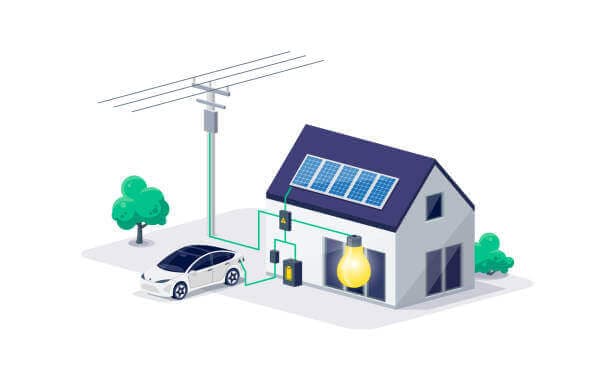
On-grid solar solutions, also known as grid-tied solar systems, are an effective way to harness solar energy and reduce electricity bills while contributing to a more sustainable energy future. In Pakistan, where electricity shortages and rising costs are a concern, on-grid solar solutions offer a reliable and cost-effective alternative. This guide provides an overview of the steps and considerations involved in setting up an on-grid solar system in the Pakistan market.
Understanding On-Grid Solar Systems:
An on-grid solar system is connected to the local utility grid. It generates electricity from sunlight using solar panels and feeds the excess energy back into the grid. During times when the solar system isn't producing enough energy (e.g., at night), you can draw electricity from the grid.
System Sizing and Design
- Energy Consumption: Determine your average monthly energy consumption to size the system correctly. This information can be obtained from your electricity bills.
- Solar Panels: Calculate the number of solar panels needed based on their wattage, efficiency, and available installation space.
- Inverter: Choose a grid-tied inverter that matches the capacity of your solar panels. This inverter converts the DC power generated by the panels into AC power suitable for household use.
Site Assessment:
Roof Suitability: Assess the suitability of your roof for solar panel installation. The roof should receive ample sunlight throughout the day without significant shading. Orientation and Tilt: Install the solar panels facing south for optimal energy generation in the northern hemisphere. The tilt angle should be adjusted based on your location's latitude.
Government Regulations and Incentives:
Net Metering: Pakistan offers net metering, allowing you to receive credit for excess energy fed back into the grid. This credit can offset your electricity bills during periods of low solar production. Tariff Structure: Understand the electricity tariff structure and how it impacts your savings through solar energy generation. Subsidies and Tax Benefits: Research any available subsidies, grants, or tax benefits for installing solar systems in your area.
Equipment Procurement:
Solar Panels: Choose reputable solar panel manufacturers known for quality and performance. Monocrystalline panels are often preferred due to their higher efficiency. Inverters: Opt for grid-tied inverters from reliable brands. Consider features like monitoring capabilities and warranty. Mounting System: Use quality mounting structures that are suitable for your roof type and can withstand local weather conditions.
Installation:
Professional Installation: Hire a certified solar installation company with experience in grid-tied systems. Electrical Work: Properly wire the solar panels, inverter, and grid connection to ensure safety and optimal performance. Permits and Approvals: Obtain any necessary permits from local authorities before installation.
Monitoring and Maintenance:
Monitoring System: Install a monitoring system that allows you to track the performance of your solar system in real-time. Regular Inspection: Conduct periodic visual inspections to ensure panels and wiring are in good condition. Cleaning: Keep the solar panels clean to maximize energy production, especially in dusty or polluted environments.
Financial Considerations:
Initial Investment: Calculate the total cost of the system, including equipment, installation, and any additional expenses. Savings: Estimate your potential savings by considering reduced electricity bills and net metering benefits. Payback Period: Determine the payback period—the time it takes for your savings to equal your initial investment.
Environmental Impact:
Carbon Footprint: Understand the positive environmental impact of using solar energy, including reduced greenhouse gas emissions. Educational Opportunities: Share your experience with others to promote renewable energy adoption.
On-grid solar solutions offer an excellent opportunity to harness clean energy while saving money on electricity bills in Pakistan. Proper planning, site assessment, quality equipment, and professional installation are crucial for a successful solar system setup. By following this guide and collaborating with experienced solar professionals, you can contribute to a more sustainable and energy-efficient future for Pakistan.